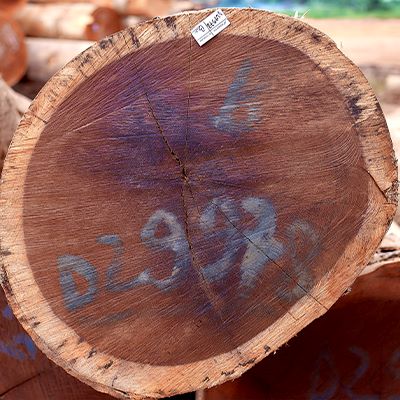Iroko
Scientific name:
Milicia excelsa
Cameroonian name:
/
Distribution in tropical Africa:
From Ivory Coast to Kenya and Mozambique
Description of the wood:
Bark: dark grey, smooth in young specimens then rough, scaly, cracked longitudinally with numerous yellowish lenticels at the bottom of the cracks; hard, granular, orange-yellow slice, abundantly exuding a very fluid whitish latex which coagulates in the air.
Sapwood: very differentiated, yellowish white.
Wood: yellowish brown darkening in the light, sometimes with calcareous concretions.
Log diameter: /.
Physical properties:
Medium-hard, slightly to moderately nervous
Mechanical properties:
Low fissile
Uses:
Veneer cabinetmaking, cabinetmaking, furniture, parquet floors, stairs, carved objects.


